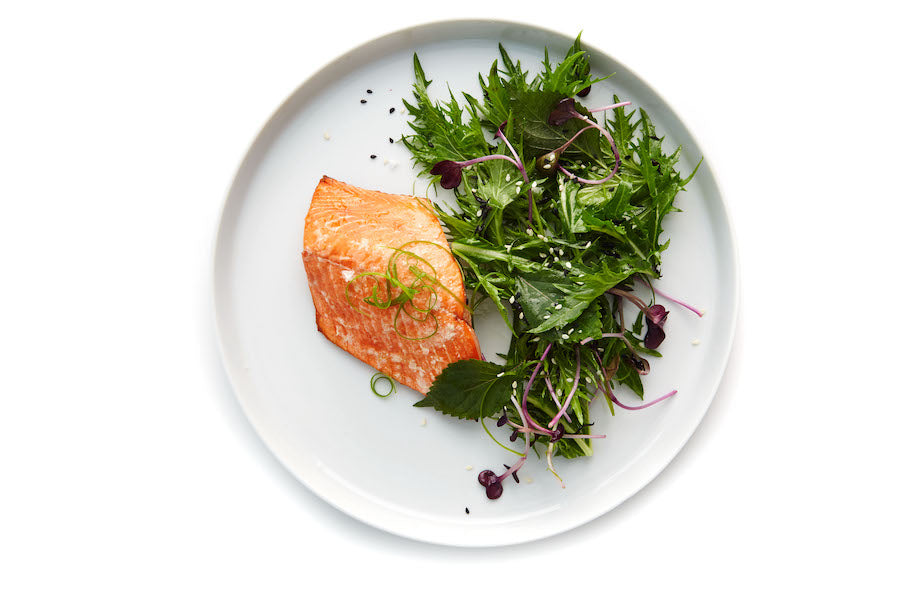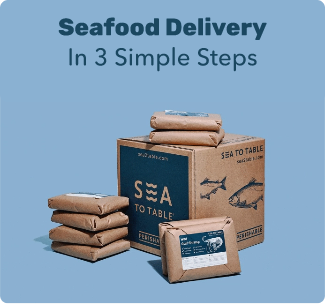
Key Takeaways About the Difference Between Atlantic Salmon and Wild Alaskan Salmon:
- Atlantic and Wild Alaskan Salmon are differentiated by their habitat, diet, nutritional profile, and taste and texture.
- Atlantic salmon is farmed, contains more calories, and has a less healthy omega-3 to omega-6 ratio than Alaskan salmon. Alaskan salmon is wild, has a more favorable omega-3 to omega-6 ratio, and contains fewer contaminants.
- When cooking wild Alaskan salmon, it is recommended to cook it for a shorter time than farmed Atlantic salmon due to wild salmon being leaner.
- Sea to Table is your trusted source for Wild Alaskan Salmon. We never sell farmed Atlantic or imported salmon.
Nutritional and Environmental Differences between Atlantic and Wild Alaskan Salmon
Many people wonder about the differences between Atlantic and Alaskan salmon. The distinction goes far beyond just the name. In this piece, we will dive into the intricacies of these two types of salmon. We will explore their distinct physical attributes, habitats, diet, and flavors. By understanding the differences between Atlantic and Wild Alaskan salmon, we can make informed decisions when selecting our next seafood dish.
Let's examine the disparities in terms of cultivation process, habitat and diet, flavor, nutritional profile, and environmental impact using a comparative analysis.
Characteristics of Atlantic Salmon Vs Wild Alaskan Salmon
|
Atlantic Salmon |
Wild Alaskan Salmon |
|
|
Cultivation Process |
Farmed |
Wild Caught |
|
Nutritional Profile |
Thinner fillets with less fat content thus less omega-3 fatty acid compared to wild-caught Alaskan salmon varieties like sockeye and king salmon. |
Higher fat content results in enticing flavor and a more extensive range of health benefits such as cardiovascular disease prevention due to high omega-3 levels. |
|
Environmental Impact |
Exposure to parasites (sea lice) that tunnels through the skin. Escaping farmed Atlantic salmon have an adverse effect on the wild population by impeding gene flow or spreading diseases through conspecific interactions. |
Wild Alaskan Salmon is in its natural habitat improving overall quality of marine life. Not easily prone to exposure from contamination or disease outbreak. |
|
Taste and Texture |
Milder taste, softer texture. |
Meaty texture and superior flavor due to its high fat content. |
It’s best to opt for wild Alaskan sockeye over farmed Atlantic salmon for your next meal at home. Elevate your omega-3 intake while sidestepping potential contaminants found present within farmed Atlantic Salmon.
Which is Better for the Environment, Atlantic Salmon or Wild Alaskan Salmon?
When it comes to choosing between Atlantic and Alaskan salmon, people often wonder which one is better in terms of nutrition and impact on the environment.
First, let’s discuss Atlantic salmon. This type of salmon is extensively cultivated and has a significant impact on the environment. On the other hand, Alaskan salmon's habitat and diet are naturally diverse, making it unique. We’ll also be discussing its nutritional profile and environmental impact.
Atlantic Salmon: Cultivation Process, Nutritional Profile, and Environmental Impact
Atlantic Salmon is typically farmed in crowded conditions where they are given a fish meal-based diet. The use of antibiotics in farming practices has also raised concerns about the potential spread of antibiotic resistance. Additionally, these farms are notorious for polluting nearby waterways with waste from the fish.
Wild Alaskan Salmon: Habitat, Diet, and Environmental Impact
Alaskan salmon primarily feeds on zooplankton during its initial freshwater habitat phase before transitioning to smaller fish while at high seas. They are among the healthiest fish with minimum contamination going up their food chain due to the low levels of industrialization where these fish thrive.
The Alaskans have long considered salmon as sustenance even before statehood was granted in 1959. They carry a huge cultural significance to them that involve celebration, trade commerce as well as family subsistence necessities. Recently experts have focused on sustainable fishing strategies to extend salmon viability without endangering marine ecosystems in Alaska's waters while developing fisheries alongside other offshore industries like oil drilling platforms and shipping lanes.
Flavor Differences between Atlantic and Wild Alaskan Salmon
From rich and robust Alaskan sockeye to bland and farmed Atlantic, the flavor differences between the two are as stark as night and day.
In this section, we'll explore the different flavors of Atlantic and Alaskan salmon. More specifically, we'll take a closer look at the taste and texture differences between Alaskan Sockeye Salmon and farmed Atlantic salmon. How do these two types of salmon compare when it comes to flavor? Let's find out.
Taste and Texture of Alaskan Sockeye Salmon
Mildly sweet and nutty with a distinct earthiness. Dense flesh with small flakes that hold together well when cooked. Bright orange-red hue that comes from the red-orange astaxanthin pigment developed in their muscles as they feast on krill and plankton during their migratory journey in the Pacific Ocean.
Taste and Texture of Farmed Atlantic Salmon
Farmed Atlantic salmon have a mild flavor and a delicate, flaky texture. This is due to the diet of these fish, which includes grains and other fish-based feeds that are designed to optimize their growth rate. Its mildness makes it an ideal choice for those who prefer less fishy flavors in their seafood dishes. However, this difference in taste can be attributed to the diet of the salmon as well as differences in water temperature, habitat, genetics and lifestyle.
Health Benefits of Eating Wild Alaskan Salmon over Farmed Atlantic Salmon
In this segment, let's take a closer look at the health benefits of eating Alaskan Sockeye Salmon over farmed Atlantic salmon. We'll analyse the Omega-3 fatty acid content which provides numerous health benefits, and also explore the presence of contaminants found in farmed Atlantic salmon. By the end of this analysis, it will be clear why Wild Alaskan Salmon is a healthier option than farmed Atlantic salmon.
Omega-3 Fatty Acid Content
The unique nutritional characteristic that sets Wild Alaskan salmon apart from farmed Atlantic salmon is its omega-3 fatty acid content.
|
Salmon Type |
Omega-3 Fatty Acid Content (per 100g) |
|
Wild Alaskan Sockeye Salmon |
1.5-2g |
|
Farmed Atlantic Salmon |
0.4-1g |
The high omega-3 fatty acid content in wild Alaskan salmon is due to their natural diet of plankton and their long migration from freshwater rivers to the saltwater of the Pacific Ocean, which makes them stronger and leaner with a more robust taste compared to farmed Atlantic salmon. To ensure adequate intake of omega-3 fatty acids, it is recommended to consume wild-caught Alaskan salmon at least twice a week. Incorporating this type of salmon into your diet can lead to better heart health, improved cognitive function, and other health benefits associated with omega-3s.
Presence of Contaminants in Farmed Atlantic Salmon and Wild Alaskan Salmon
Toxic substances present in farmed Atlantic salmon are a concern for the consumption of these fish. The levels of toxins can differ due to the different environments, diets, and living conditions of these species.
|
Contaminant |
Farmed Atlantic Salmon (µg/kg) |
Wild Sockeye Salmon (µg/kg) |
|
Mercury |
47.9 |
5.6 |
|
PCB’s |
33.0 |
2.6 |
|
Dioxins |
0.29 |
The higher mercury, PCBs, and dioxins levels found in farmed Atlantic salmon may be due to their exposure to toxic chemicals used in the fish feed and enclosing environment.
Ensure you prioritize your health by choosing wild sockeye salmon from the Pacific Northwest for its lower contaminant levels compared to farmed Atlantic salmon. Why settle for farmed salmon when you can dive into the wild wonders of Sockeye?
Five Facts About the Difference Between Atlantic and Alaskan Salmon:
- Wild Alaskan salmon has a bold, salmon-forward flavor that is a result of its habitat and life cycle, while farmed Atlantic salmon is significantly less flavorful because it is fed a diet deficient in the nutrients from the wild that give salmon its rich qualities.
- Wild Alaskan salmon is harvested in a vast marine ecosystem, while farmed Atlantic salmon is typically raised in net pens in polluted coastal waters.
- Wild Alaskan salmon is a good source of omega-3 fatty acids from its diet of krill, plankton, and small fish, while farmed Atlantic salmon has an overabundance of omega-6 fatty acids from its soy-and-corn-based diet.
- Farmed Atlantic salmon can contain elevated levels of PCBs, dioxins, and pesticides, which have been associated with adverse health effects in humans, while wild Alaskan salmon from clean ecosystems is low in contaminants and a healthy source of protein.
- Wild sockeye salmon generally takes less time to cook because it is leaner than farmed Atlantic salmon, which has a higher unhealthy fat content due to its diet of engineered pellets.
FAQs about The Difference Between Atlantic And Alaskan Salmon
What are the key differences between Atlantic salmon and wild Alaskan salmon?
Atlantic salmon and Wild Alaskan salmon differ in their nutritional profile, flavor, and appearance due to how and where each spends its life. Sockeye salmon develop their robust qualities in a vast marine ecosystem, swimming thousands of miles over a lifetime in an epic hunt for food, while farm-raised Atlantic salmon are typically confined to a net pen, often situated in polluted, coastal waters, where they’re fed engineered pellets that can never truly replace a wild diet.
Is wild Alaskan salmon better than farmed Atlantic salmon?
Yes, wild salmon from Alaska is better than farmed Atlantic salmon when comparing their health impact and environmental effects. Sockeye salmon is rich with nutrients from the wild and is more flavorful than farmed Atlantic salmon. In contrast, farmed Atlantic salmon is fed dye to resemble wild salmon, but it’s much less flavorful and contaminated with chemicals that can have a serious effect on personal health. The practices espoused at a typical salmon farm also contaminate surrounding ecosystems and create competition for resources between farmed salmon and wild species.
What does Wild Alaskan salmon taste like?
Wild salmon has a “salmon-forward” flavor that is bold enough to enjoy on its own or to be paired with intense flavor profiles. It has a meaty, dense quality as it is quite lean — but it’s a good source of omega-3 fatty acids. Between its texture and flavor, sockeye is one of the boldest species of wild salmon, giving you a true taste of nature.
What does Atlantic salmon taste like?
Farmed Atlantic salmon doesn’t pack the same punch as sockeye salmon. It is significantly less flavorful and higher in fat. The diet of farmed Atlantic salmon gives them an overabundance of omega-6 fatty acids, resulting in bloating and stress. These characteristics result from their diet of pellets, which is deficient in the nutrients from the wild that give sockeye its rich qualities. These pellets are often supplemented with fish oils, but not nearly enough to match the fat ratios of a wild diet.
How do you cook wild Alaskan Salmon?
Wild-caught sockeye salmon generally takes less time to cook because they’re leaner than farmed Atlantic salmon. When cooking wild salmon with recipes that call for farmed salmon, you should expect to reduce the total cooking time to avoid overcooking the fillet. You may also find that you prefer lean, wild salmon cooked to a different doneness than farmed Atlantic salmon, so it’s worth looking over recommended internal cook temperatures for wild species.
What are the health benefits of sockeye salmon compared to Atlantic Salmon?
Sockeye salmon is healthier than farmed Atlantic salmon across several considerations. Due to a diet rich in krill, plankton, and small fish, wild salmon are naturally a good source of omega-3 fatty acids that can help stave off oxidative stress and support heart health. Wild salmon are low in contaminants due to clean ecosystems, meaning they’re a healthy and safe source of protein that anyone can include in their diet on a regular basis. Farmed salmon don’t have access to a wild diet, so they are often fed soy-and-corn-based feed that must be supplemented with omega-3s and synthetic antioxidants. Farmed Atlantic salmon can contain elevated levels of PCBs, dioxins, and pesticides, which have been associated with adverse health effects in humans. Infants, children, and women of child-bearing age are especially advised to limit their consumption of seafood with elevated levels of these toxins in order to protect their health.
← Older post Newer post →

